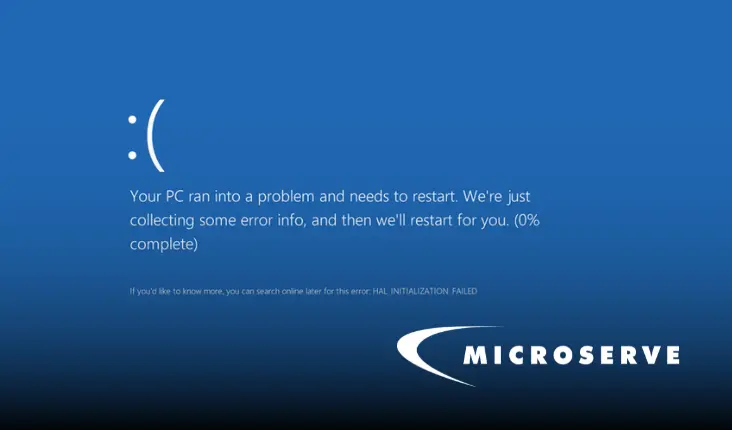
Microsoft turns on Yammer for commercial Office 365 customers
According to Venture Beat, Microsoft is trying to entice business customers using Office 365 to get into Yammer by enabling it by default. Which is a smart move for Microsoft since it hasn’t really leveraged Yammer since they acquired it in 2012. However, before you jump on the Yammer (or any other collaboration tool) bandwagon, you need to ask yourself a few simple questions first.
Rolling out a new collaboration initiative is destined to fail if you don’t think about how it will fit into your bigger communications ecosystem.
1. Why?
Why are you thinking about Yammer? Is it because it’s free with Office 365? Is it because is seems like all the cool companies use group chat? Is it because you’ve always wanted to try it and are curious? Trying Yammer (or Slack or Hipchat or Chatwork) because you’ve read that email is dead and group chat is the next thing isn’t bad per se, but that’s buying into the hype engine and not the why people are trying to move away from email or even what the downsides of group chat are. Oh there are downsides to group chat, trust me.
Before you bring in any new collaboration tool, you need to ask yourself why and be honest with yourself. Curiosity is cool. Testing is cool. If people are already using group chat in pockets and you’d like to unify everyone, cooler. Just ask why. Answer. And then see if it’s still a good idea.
2. What is it replacing?
Email of course! I hate to break it to you, but group chat cannot replace email 100%. Email is essential to business communications. You can’t get rid of it, you might be able to reduce how much you using it internally or with close partners, but get rid of email? Not. Going. To. Happen.
Let’s start over then. What do you want people to use Yammer for instead of something else? Do you want project and product discussion in a central place and not lost in mass email threads? Are you trying to connect a distributed workforce? If you bring a tool into the company and it isn’t replacing something else (at least to some extent) it will become a neat thing for a while then die a slow, painful death. We have a limited amount of time and attention in our lives. Adding yet another tool (YAT) to the mix doesn’t help unless it replaces something else and it makes life better in some way. Project management and task management tools can be pretty easy to implement. They replace having spreadsheets and task lists in a bunch of different apps and they can keep project conversations all together. But if you still insist on doling out tasks on a shared Excel sheet, no one is going to switch to the new task tool. Once the new system gets out of sync with the old familiar one, you’re hooped.
Don’t bring in a new tool without knowing what it will replace, why it’s better, and how you’re going to overcome objections to the scary new tool. Yes, a lot of people see a new piece of software, not something fun to learn. But there is one more thing you need to ask yourself before you try to bring any kind of workplace transformation tool in: who is going to lead the charge?
3. Who Owns It?
If you’re reading this post, chances are the answer to the question is: you. You own this new tool. If you’re lucky enough, you own it with another person or two so you can spread the evangelism duties around. Whether it’s one person or ten, your core people who want to see Yammer or Basecamp or Trello adopted have to do a few things to ensure success:
-
- You must know the app or service inside and out. Every trick, every bug, every shortcut, every little thing that will help people use the tool. If you don’t know the answer you frickin’ go find it.
-
- You must walk the walk and talk the talk. Want group chat to succeed. You need to use it all the time. Managing projects with Basecamp? You’re posting, assigning, discussing, and uploading like crazy. There are no half measures here, you’re either in or you’re out.
-
- Know what success looks like. If Yammer is successful, what is the business doing better? Are teams more transparent? Are there fewer “oh didn’t you get that email? You must not have been on the thread” conversations? Whatever you want to achieve, know what it looks like.
-
- Know when to call it quits. This isn’t defeatist, it’s truth. Sometimes even the coolest tool on the block just doesn’t fit with your company. There could be a ton of reasons from technical to simply the boss doesn’t like it and brings the experiment to a grinding halt. Just know what that moment is like and what you’ll do next.
The key is that you’re the person who is pushing this app through and trying to get folks to use it. If you saw an app you think would be awesome, but don’t have the pull or skills to promote it…find someone who can before you try. Without a person running the show (at least until it’s rolling on its own), expect the whole experiment to whither and die.
Doesn’t Matter What the Tool Is, These Three Questions Are Essential to Success
It’s the basic why, what, and who world. Why are you doing it, what is it replacing, and who’s in charge. And it doesn’t matter if you’re trying to use Yammer or Skype for Business (aka Lync) or Sharepoint or any other tool. If you’re trying to transform your workplace, you need to have these three questions in mind before you start.
If you don’t you’re going to wish you had.





